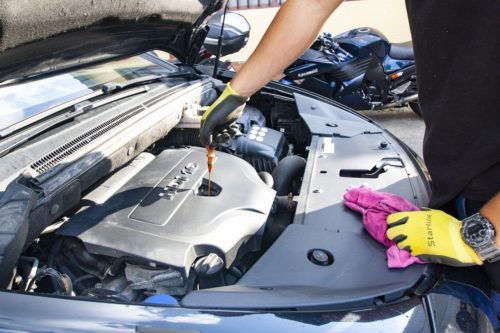How to Change Your Engine oil

O il, which is essential to the protection of your vehicle and guarantees a long service life, is subject to particularly difficult conditions of use. Therefore, it is important to replace it regularly to ensure that your vehicle is always operating optimally.
Drains are usually carried out by your mechanic during the overhaul of your vehicle. However, you can also empty your vehicle yourself if you feel you have the tools and skills to do so.
Here’s What You Need To Do
Prepare Your Car
To make engine oil less viscous and make it flow more easily during emptying, it is advisable to turn on your vehicle's engine and run it for 5 to 10 minutes. Then, make sure that your vehicle is on a flat and horizontal surface. Turn off the engine, put it in neutral, and apply the handbrake.
There must be enough space under the car to allow you to access the oil sump. If not, you can use a jack to lift the car, and stabilize it with cylinders. Never slip under the car if it is held only by a jack, because it is then very unstable. The cylinders are there to reduce this instability. They must be put in place in accordance with the manufacturer's recommendations in the maintenance manual.
Unscrew the Oil Cap
Open the hood and unscrew the oil cap so that air can enter the oil system. The cap can be easily identified by a specific color (yellow) or symbol. Refer to the maintenance manual if you are not sure if you have identified the cap to be unscrewed.
Once the cap is loosened, the oil will flow more easily during emptying. It will also make it easier to replace used oil with new oil.
Empty The Oil From Your Engine
Once you have identified the oil sump and drain plug under your car (to do this, consult the maintenance manual), protect the floor by spreading newsprint or absorbent paper. Place the container under the cap and make sure it is large enough to contain all the oil that needs to be emptied. Unscrew the drain plug using the key provided for this purpose. Avoid touching the oil, it can be very hot. Make sure you do not drop the cap when handling it with your gloves. Allow used oil to drain for 20 to 30 minutes. When the housing is empty, i.e. when the oil has stopped flowing, put the drain plug back in place, remembering the seal or washer.
- Remove the used oil filter
- Install the new filter
- Return new oil to the engine.
- Before returning oil to your engine, refer to the maintenance manual to know precisely the amount of oil needed, and the type of oil you need to use.
- Use a funnel to fill the engine. Pour the oil slowly into the engine, taking breaks so that it has time to drain. It will also avoid air bubbles and splashes.
- Pour the volume of oil specified in the maintenance manual or user guide. If they do not provide any information about the required volume, we recommend that you pour 4 L first, then adjust the oil level several times until it is between the minimum and maximum levels.
- Use the gauge while you fill the engine so that you can check the oil level in real time.
Check The Oil Level
Let the engine idle for a few minutes (the vehicle must be stationary, the hand brake applied and the engine neutral). Turn off the engine, check the oil level again and adjust it if necessary. You may have spilled some oil on the engine by filling it. Don't forget to clean the engine with a cloth before closing the hood.
Also remember to clean any stains on the floor.
Cleaning
You may have spilled some oil on the engine by filling it. Don't forget to clean the engine with a cloth before closing the hood.
Also remember to clean any stains on the floor.
Discard Your Used Oil Appropriately
Under no circumstances should you get rid of used oil by throwing it into pipes or in nature. The oil and used filter must be brought to an automotive service center or recycling center.
There you have it! Now you know how to change your engine oil by yourself! Good luck!








